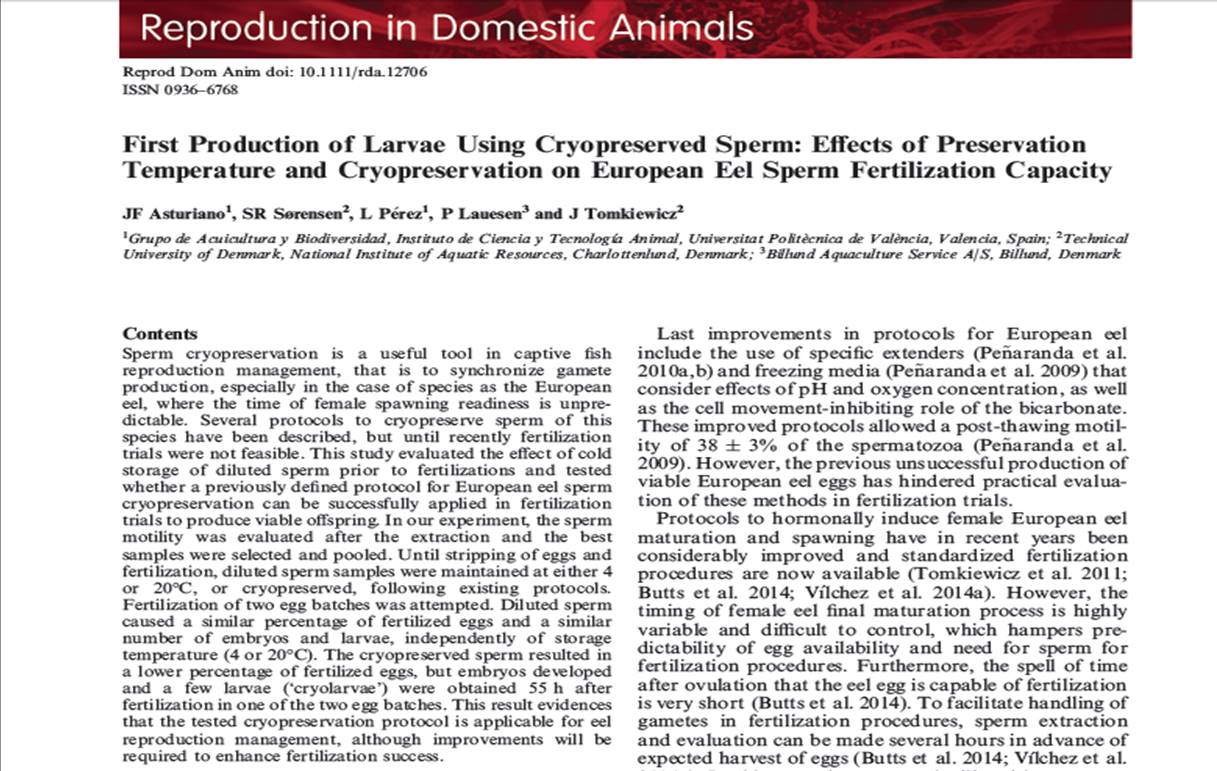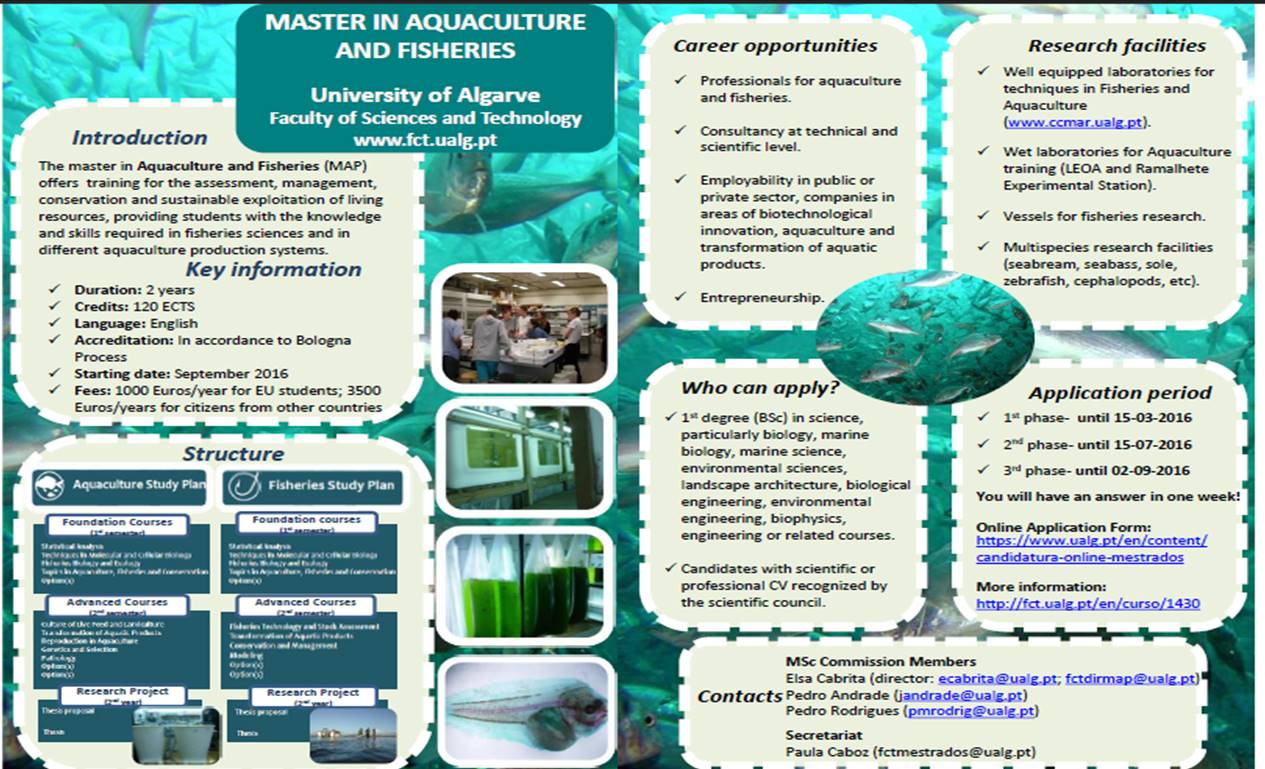
Last Friday 15th of July Marina Morini defended her PhD, entitled “Molecular approaches related to the European eel (Anguilla anguilla) reproductive process”, that has been co-supervised by Juan F. Asturiano and David S. Peñaranda, and mainly funded by the project PRO-EEL (UE), the project REPRO-TERM (MINECO) and the AQUAGAMETE COST Action.
Dr. José Miguel Cerdá Reverter (Instituto de Acuicultura de Torre la Sal, CSIC), acted as the Chairman in the examining board, together with Dr. Ibón Cancio, from Universidad del País Vasco (secretary) and Dr. Salima Aroua (Université du Havre, France).
Marina obtained the highest mark, Sobresaliente Cum Laude. Congratulations, Dr. Morini!
The final document is a compilation of 4 articles:
● Temperature modulates the testis steroidogenesis in European eel
Peñaranda et al., 2016. Comparative Biochemistry and Physiology Part A: Molecular & Integrative Physiology
● Expression of nuclear and membrane estrogen receptors in the European eel throughout spermatogenesis
Morini et al., submitted to Comparative Biochemistry and Physiology Part A: Molecular & Integrative Physiology
● Nuclear and membrane progestin receptors in the European eel: characterization and expression in vivo through spermatogenesis
Morini et al., submitted to PloS ONE
● Transcript levels of the soluble sperm factor protein phospholipase C zeta 1 (PLCζ1) increase through induced spermatogenesis in European eel
Morini et al., 2015. Comparative Biochemistry and Physiology Part A: Molecular & Integrative Physiology
The document includes a general introduction and discussion and it will be available in some weeks upon request by email to Juan F. Asturiano (jfastu@dca.upv.es).
Abstract
The European eel (Anguilla anguilla, L., 1758) population is in dramatic decline, so much so that this species has been listed as “Critically Endangered” on the Red List of Threatened Species, by the International Union for Conservation of Nature (IUCN). The European eel has a complex life cycle, with sexual maturation blocked in the absence of the reproductive oceanic migration, and an inability to mature in captivity without the administration of hormonal treatments. Even though experimental maturation induces gamete production of both sexes, the fertilization results in infertile eggs, unviable embryos and larvae, which die within a few days of hatching. Therefore, understanding the eel reproductive physiology during maturation is very important if we want to recover the wild eel population. Furthermore, due to its phylogenetic position, representative of a basal group of teleosts, the Elopomorphs, the Anguilla species may provide insights into ancestral regulatory physiology processes of reproduction in teleosts, the largest group of vertebrates.
In this thesis, characterization, phylogeny and synteny analyses have given us new insight into the evolutionary history of the reproductive process in vertebrates. The European eel possesses five membrane (mPRs) and two nuclear (nPR or pgrs) progestin receptors. Eel mPRs clustered in two major monophyletic groups. Phylogeny analysis of vertebrate nPRs and PLCζ1 (sperm specific protein) places both eel PLCζ1 and nPR sequences at the base of the teleost clade, which is consistent with the basal position of elopomorphs in the phylogeny of teleosts. To further resolve the origin of the duplicated eel nPRs, synteny analyses of the nPR neighboring genes in several vertebrate genomes were performed. Phylogeny and synteny analyses allowed us to propose the hypothesis that eel duplicated nPRs originated from the 3R.
In order to gain a better understanding of the role of the genes implicated in eel reproduction, analyses of their regulation during experimental maturation were carried out. The change in salinity induced parallel increases in E2 plasma and nuclear estrogen receptor expression levels, revealing a stimulatory effect of salinity on the E2 signalling pathway along the BPG axis, leading to a control of spermatogonial stem cell renewal. Brain and pituitary estrogen receptors may then mediate the stimulation of androgens and steroidogenic enzymes linked to androgen synthesis. Androgen synthesis is not dependent on temperature, but further maturation requires higher temperatures to induce a change in the steroidogenic pathway towards estrogen and progestin synthesis. This is consistent with our studies on estrogen and progestin receptors. In the testis, progestin seems to regulate meiosis through membrane and nuclear progestin receptors, and final sperm maturation seems to be controlled by both estrogen and progestin through the estrogen and progestin membrane receptors. Finally, eel sperm-specific PLCζ1 seems to have an important function in spermatozoa by inducing egg activation and temperature may play a role in its regulation, especially during the process of spermiogenesis.
This thesis attempts to evaluate the physiological function of the genes involved in eel reproduction during spermatogenesis, and demonstrates that salinity and temperature play crucial roles in the sexual maturation of the male European eel.








